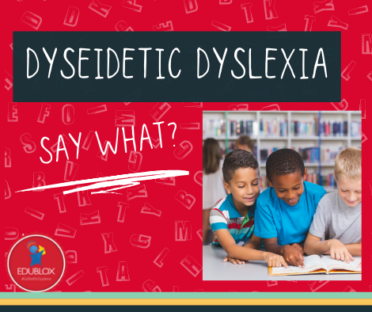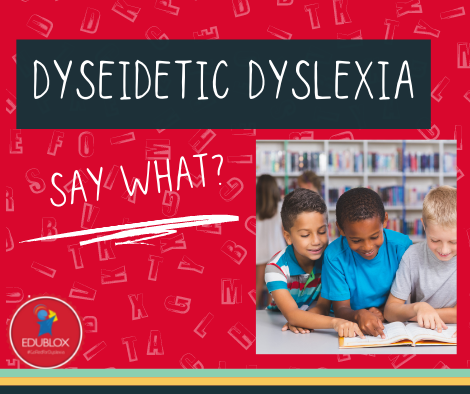
 Deer momee and dadee
Deer momee and dadee
I bo not wont to do to shool eny more becouse the children ar lafing at me. I canot reed pleese help me
jor sun Tom
Tom is not slow at learning. In fact, according to the evaluations of a few professionals, he is rather intelligent. Yet, he certainly has a problem, and he shares his problem with millions of other children and adults. Tom has dyslexia.
The term “dyslexia” was introduced in 1884 by the German ophthalmologist Berlin. He coined it from the Greek words dys, meaning ill or difficult, and lexis, meaning word, and used it to describe a specific disturbance of reading without pathological conditions in the visual organs. In a later publication in 1887, Berlin stated that dyslexia, “presuming right-handedness,” is caused by a left-sided cerebral lesion. He spoke of “word blindness” and detailed his observations with six patients with brain lesions who had full command over verbal communications but had lost the ability to read.
In the century that followed, the narrow definition Berlin had attached to the term dyslexia would broaden. Today, the term dyslexia refers to a typical child — or adult — who seems much brighter than what their reading and written work would suggest. While the term is mostly used to describe a severe reading problem, there has been little agreement in the literature or practice concerning the definition of severe or the specific distinguishing characteristics that differentiate dyslexia from other reading problems.
The terms dyseidetic and dysphonetic are generally used to describe two main types of dyslexia.
Dyseidetic dyslexia
The prominent characteristic of dyseidetic dyslexia, also called visual dyslexia, is the inability to revisualise the gestalt of words. Usually, the child has little difficulty spelling words that may be long but are phonetically regular. The small but irregular non-phonetic words, such as what, the, talk, and does, create the greatest difficulty for this child.
Author Corinne Roth Smith lists the reading and spelling patterns of children with dyseidetic dyslexia:
• Confusion with letters that differ in orientation (b-d, p-q).
• Confusion with words that can be dynamically reversed (was-saw).
• Very limited sight vocabulary; few words are instantly recognized from their whole configuration — they need to be sounded out laboriously, as though being seen for the first time.
• Losing the place because one doesn’t instantly recognise what had already been read, as when switching one’s gaze from the right side of one line to the left side of the next line.
• Omitting letters and words because they weren’t visually noted.
• Masking the image of one letter by moving the eye too rapidly to the subsequent letter may result in the omission of the first letter.
• Difficulty learning irregular words that can’t be sounded out (for example, sight).
• Difficulty with rapid retrieval of words due to visual retrieval weaknesses.
• Visual stimuli in reading prove so confusing that it is easier for the child to learn to read by first spelling the words orally and then putting them in print.
• Insertions, omissions, and substitutions if the passage’s meaning is guiding reading.
• Strengths in left hemisphere language processing, analytical and sequential abilities, and detail analysis; can laboriously sound out phonetically regular words even up to grade level.
• Difficulty recalling the shape of a letter when writing.
• Spells phonetically but not bizarrely (laf-laugh; bisnis-business).
• Can spell difficult phonetic words but not simple irregular words.
Dysphonetic dyslexia
Dysphonetic dyslexia, on the other hand, is associated with auditory processing difficulties. These children have difficulty remembering letter sounds, analysing the individual sounds in words, and sequencing/blending these into words.
Smith lists the reading and spelling patterns of children with dysphonetic dyslexia, also called auditory dyslexia:
• Difficulty discriminating between individual sounds in beginning reading instructions (occurs seldom).
• Difficulty processing rapid auditory inputs so that consonant sounds that cannot be sustained (p-b) are not perceived; these may then be omitted in reading.
• Poor ability to analyse the sequence of sounds and syllables in words; consequently, they become reversed in reading words; this is akin to the problem faced orally when poor auditory analysis has taught the child such phrases as “lead a snot into temptation” and “Harold be Thy name” in the Lord’s prayer, or “lmnop” being one lumped cluster in the alphabet song.
• Poor ability to remember individual sounds or sequences of sounds.
• Difficulty blending individual sounds into words.
• Difficulty listening to words and omitting one sound and substituting it for another (say cat; now take off the /c/ and put on an /f/); such abilities are essential for word analysis because that is what figuring out how to decode a word phonetically is all about; children usually develop this skill with initial consonants, and then medial vowels or consonants.
• Difficulty remembering the sounds that individual letters and phonetically regular and irregular letter combinations represent.
• Inability to rapidly retrieve letter sounds while analysing words, so that the beginning of the word is forgotten by the time the last letter of the word is recalled (naming problem).
• Difficulty analysing unknown words because of poor knowledge of phonetic rules and difficulty sequencing sounds.
• Difficulty applying the phonetic rules from words that can be read to pseudowords that follow the same pattern but are not real words.
• Vowel sounds are particularly troublesome.
• Word substitutions that are conceptually (person, human) or visually (horse, house) related but not phonetically related.
• Limited sight vocabulary because the student cannot memorise many words without the benefit of phonetic cues.
• Guessing at unfamiliar words rather than employing word-analysis skills.
• Spelling remains below reading level because it is attempted by sight rather than by ear.
• Correct spellings occur primarily on words the child has encountered repeatedly and, therefore, can be revisualized.
• Bizarre spellings that seldom can be identified, even by the child, because they do not follow phonetic patterns.
• Extraneous letters and omitted syllables in spelling.







Greetings
I have a Dyslexic child where can I get a school in Pretoria where he can be assisted.he is presently in a normal school.loosing his self esteem due to not being able to read and spell.
Dear Sophia, there *is* help for dyslexia. Kindly contact an Edublox clinic for an assessment and help: http://www.edubloxsa.co.za/contact-us/